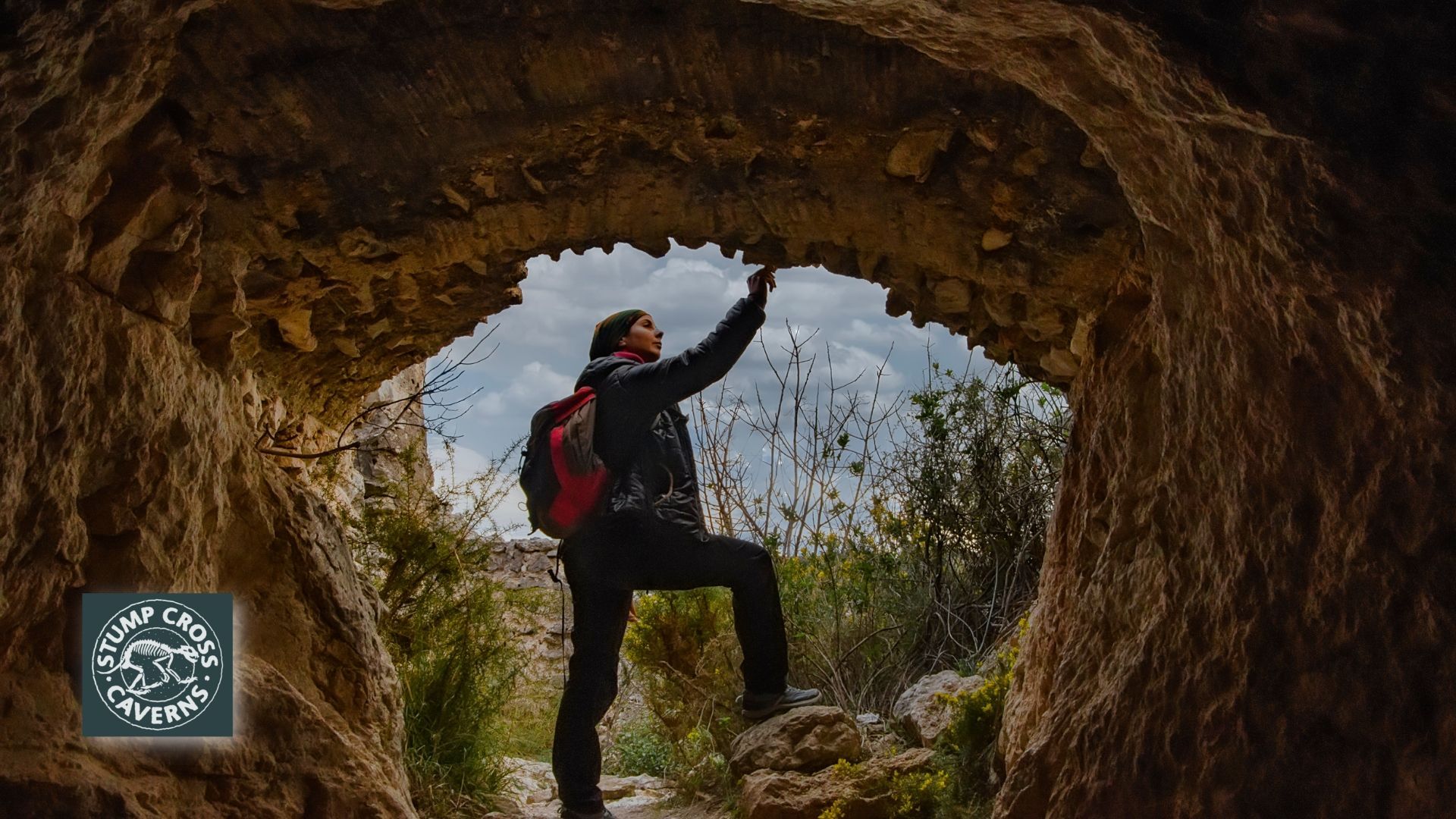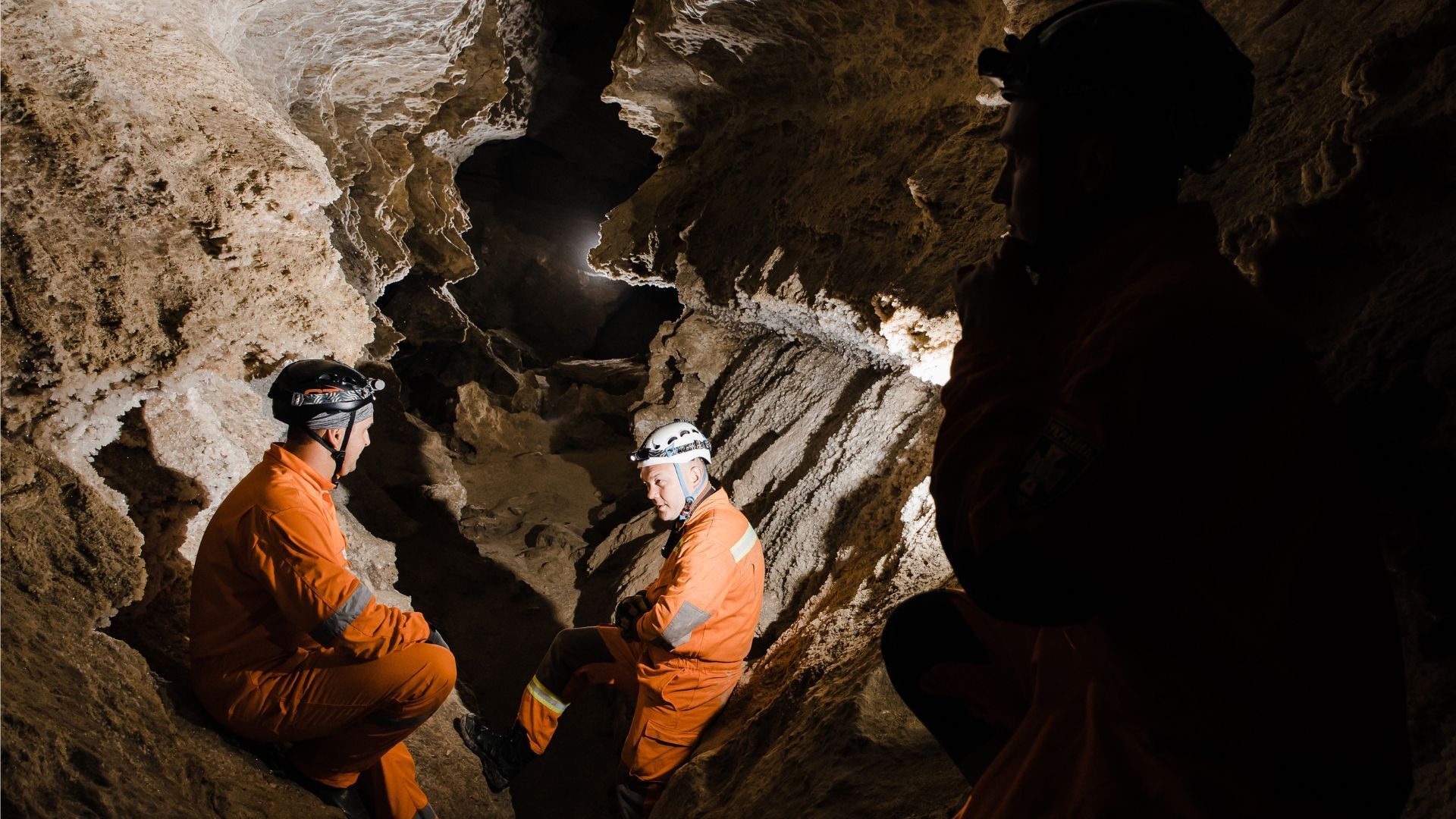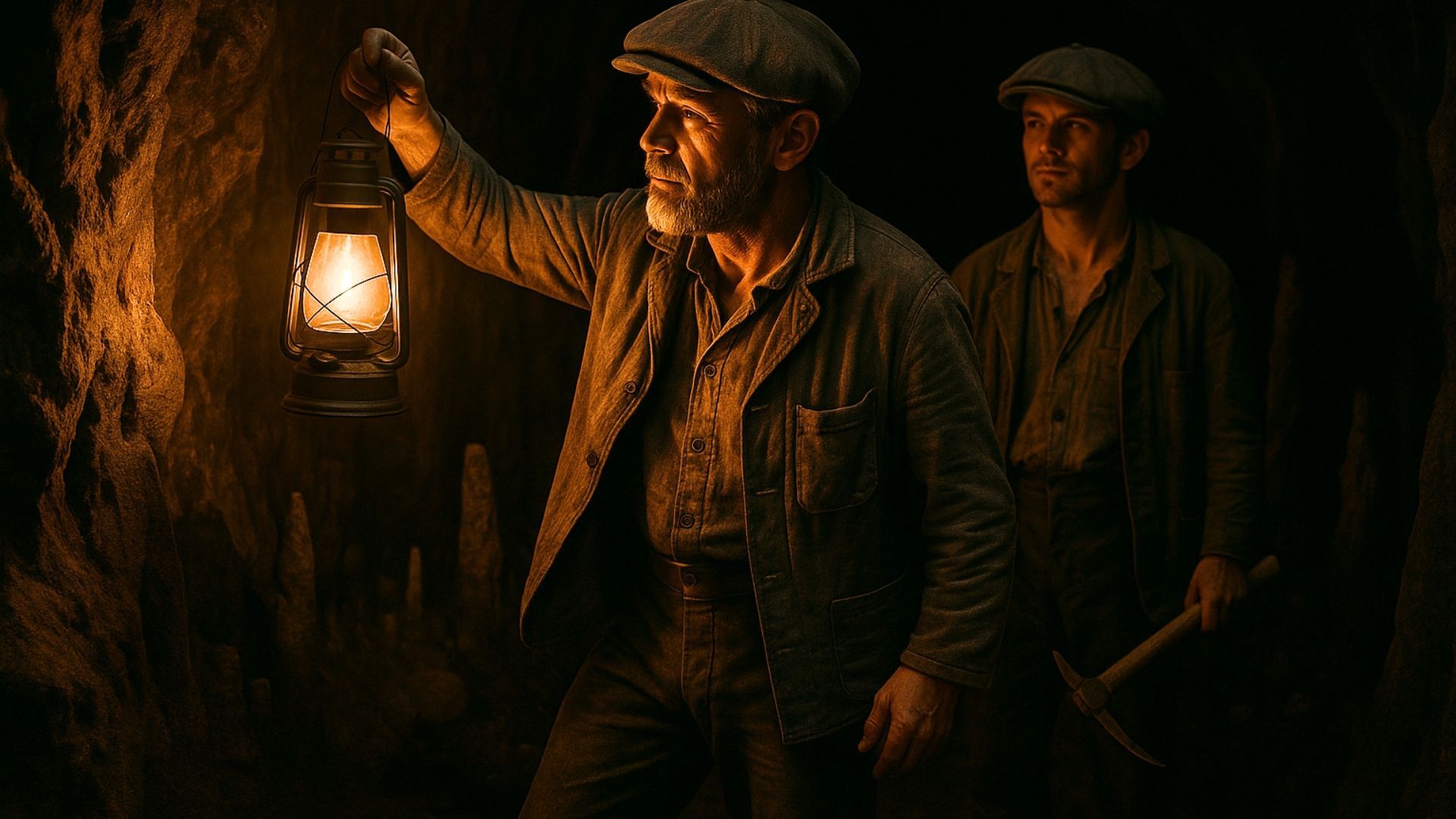At Stump Cross, we keep our cave tours super-safe. But what if you get a taste for caving and want to go a little deeper? Read our guide to get started.

People love exploring caves and have done so for years. It first became an established pursuit – like surfboarding or mahjong – in the late 19th century, when Édouard-Alfred Martel descended Gaping Gill in the Yorkshire Dales.
Type "is caving" into Google and you're highly likely to see some variation on "is caving dangerous". Tight spaces, jagged rocks, damp knees – it's not most people's idea of fun.
Well, first off, it's important to draw a distinction between "caving" and visiting a place like Stump Cross Caverns. Caving proper requires perseverance, teamwork and a willingness to squeeze through tight, muddy, dripping spaces.
A self-guided tour at Stump Cross is a whole other affair. The tunnel roofs are higher (though tall people might have to stoop a little), the route is well-established, you're in the hands of an experienced tour guide and the whole experience is in line with the appropriate Health and Safety regulations.
We've worked hard to make our caves safe and fun – so you can enjoy the underground wonderland without risking your neck.
But what if you want to go further? Are you curious about caving as a hobby? Read on.
Join a group
The first and most important thing to say is that you should never, ever go caving alone. Ever. If you get injured or stuck, you need teammates to help you out. Solo missions are a no-no.
So the best way to dip your toe into the world of potholing is to find your nearest club and ask about any upcoming trips for novices.
Before you're let anywhere near a narrow tunnel or vertical shaft, you'll be taught the fundamentals. These should cover safe caving practices, appropriate gear and the principles of cave conservation.
Then you'll have a go – but as a beginner, you will, of course, be under close supervision. You won't venture further than a well-established route.
Once you've crawled, scrambled and squeezed through a passageway, you'll probably know if it's for you. Caving is like avant-garde jazz – most people can't stand it, but those who like it really like it.
If you still have a taste after this initial experience, you'll go on to learn about map reading and vertical caving.
How do cavers stay safe?
There are seven commandments of safe caving. They aren't just there to keep the cavers safe – it's also to make sure the cave is protected.
Why? Well, some speleothems – those stalagmites and stalactites that bedeck many caves – are delicate. Poor caving can lead to speleothem damage.
There's also the issue of water. The water you're drinking, washing with and cooking with may have started life in a cave. So any pollution left by cavers should be avoided.
The commandments are as follows:
1. Get permission from the landowner or land manager before venturing into a cave
2. Never go alone!
You need a team to ensure safety in the event of an accident or injury.
3. Have a "surface watch"
Like the designated driver at a wedding, this person is nominated to stay above ground and be available in the event of an emergency.
The surface watch will need to know exactly where you're going – "into the cave" won't cut it. They need to know what time you intend to finish and who to call if you don't emerge on time.
To help the surface watch, one member of the caving team needs to be a timekeeper as well as a slime creeper. (It's not as bad as that sounds – but it can get very muddy indeed.)
4. Bring at least three sources of light and dress appropriately
Your caving chapter will have its own checklist, but your equipment will probably include:
- An appropriate amount of food and water
- Knee and elbow pads
- Appropriate footwear, gloves and warm clothing
- A first-aid kit
Caving clothes are typically synthetic to minimise tears.
5. Know your limits
Lots of different people enjoy caving – people of varying ages, levels of fitness and levels of expertise. You need to make sure that no one in the team is being pushed too hard.
6. Know the cave
Remember – at least to begin with, you're not an explorer, you're a caver! You need to visit a cave with someone who's been there before and knows the ropes, both figuratively and literally – or at the very least, someone with bags of experience and a map.
7. Keep an eye on the weather
Caves can flood – so if there's heavy rain, your group should make an informed decision.
Following these safety principles is essential to keep caving fun and exciting.
A glossary of caving
- Belly crawl: a very low passage.
- Boneyard: an intricate limestone maze.
- Boulder choke: a pile of large rocks or rubble obstructing a cave passage.
- Cave digging: enlarging cave openings so that cavers can get through.
- Karst: a landscape formed from dissolved rocks.
- Speleothem: a geological formation formed by mineral deposits over thousands of years (most famously, stalagmites and stalactites).
- Spelunking: another word for caving (not always appreciated by cavers!)
- Sump: a cave submerged under water.
- Window: a hole in a thin wall that connects two chambers or passages.
Staying safe at Stump Cross
Wet, narrow passageways not for you? You could still have a great time visiting a show cave like Stump Cross Caverns.
Our caves are filled with natural beauty – those stalagmites, stalactites and other formations that have formed over thousands of years. Our "UV light" tour means you can see them beautifully lit up.
At Stump Cross, safety is our number one priority. All safety gear is provided – that means a hard hat and torches. And all routes are clearly marked, so there's no chance of getting lost.
All in all, it's a fun, family-friendly experience that's as safe as it can possibly be.
Looking for unique places to visit near Harrogate? Why not swing by Stump Cross and explore our network of underground caverns? Book your tickets today.















